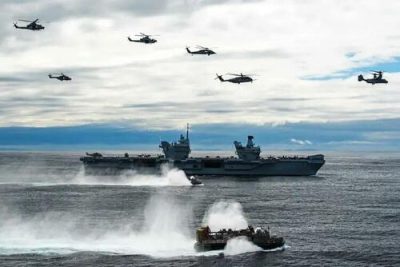US’ Naval Strategy in The Black Sea, East Asia, Japan and the Pacific. Russia’s Response: Putin’s Aide Nikolay Patrushev

Russia’s response to these newfound threats will likely take the form of more joint and coordinated actions with China.
Former Secretary of the Security Council and incumbent Presidential Aide Nikolay Patrushev shared some updates about the US’ naval strategy in his interview for Rossiyskaya Gazeta last week. He said that it’s called “Sea Superiority”, which is self-explanatory, but he added that it also implies integrating the US Navy with its regional satellites’ in order to contain the Russian and Chinese Navies. This strategy accordingly focuses on the Black Sea and Asia-Pacific regions.
Beginning with the first, the US is trying to pressure Turkiye into loosening its enforcement of the Montreux Convention so as to allow more extra-regional NATO naval assets into the Black Sea. In parallel with this, the US is building new logistics centers in Bulgaria and Romania as well as planning to deploy long-range weapons there too. There’s also some superficial talk from Ukraine and its partners about ensuring “freedom of navigation” in the Azov Sea, Patrushev said, but that’s unrealistic of course.
As for the second region, Japan is designated as the center of NATO’s attention, and it’s already carried out a whopping 30x more drills with the bloc and other US military allies this year compared to the last one. Apart from that island nation, Australia, New Zealand, and South Korea – all of four of which are collectively called the “Indo-Pacific Four” (IP4) by NATO – round out the rest of its partners. Altogether, they’re having a very destabilizing effect on the Asia-Pacific, but the US lies that they’re stabilizing it.
In response to these threats, Patrushev said that Russia is comprehensively modernizing its fleet and building many new high-tech vessels. He also mentioned that President Putin decreed that industry employees across the board from production workers to engineers receive higher wages. He was mum about other details though but that makes sense for national security reasons. The impression is that the Kremlin is well aware of the US’ newfound naval threats and preparing to properly handle them.
Reflecting on the insight that this top official just shared, it’s clear that Russia does indeed consider itself and China to be the targets of what Foreign Minister Sergey Lavrov earlier described as the US’ “dual containment” strategy, with the innuendo being that more joint responses can be expected. This can take the form of more naval and air drills as well as coordinated action like their nuclear-capable bombers both approaching Alaska at the same time last week.
Nevertheless, no matter how convincing the optics may appear, Russia and China will not enter into a mutual defense alliance since neither wants to sacrifice their troops’ lives for the others’ halfway across the world in their respective regions. These pieces here and here from 2023 clarify that while Russian-Chinese ties can be classified as an Entente, these are real limits to their “no-limits” cooperation, such as regarding India and Vietnam as explained in the two preceding hyperlinked analyses.
Any military alliance with China would instantly destroy the Asian balancing act that Russia has worked so hard to perfect over the past decade, and which it recently recalibrated earlier in the summer, so nobody should expect it to inflict such damage to its grand strategy. That said, it’ll likely work a lot closer with China in the air and naval domains in the coming future through joint and coordinated actions, though it remains to be seen whether this will deter the US and its satellites from crossing their red lines.
*
Click the share button below to email/forward this article to your friends and colleagues. Follow us on Instagram and Twitter and subscribe to our Telegram Channel. Feel free to repost and share widely Global Research articles.
Spread the Truth, Refer a Friend to Global Research
This article was originally published on the author’s Substack, Andrew Korybko’s Newsletter.
Andrew Korybko is an American Moscow-based political analyst specializing in the relationship between the US strategy in Afro-Eurasia, China’s One Belt One Road global vision of New Silk Road connectivity, and Hybrid Warfare. He is a regular contributor to Global Research.

